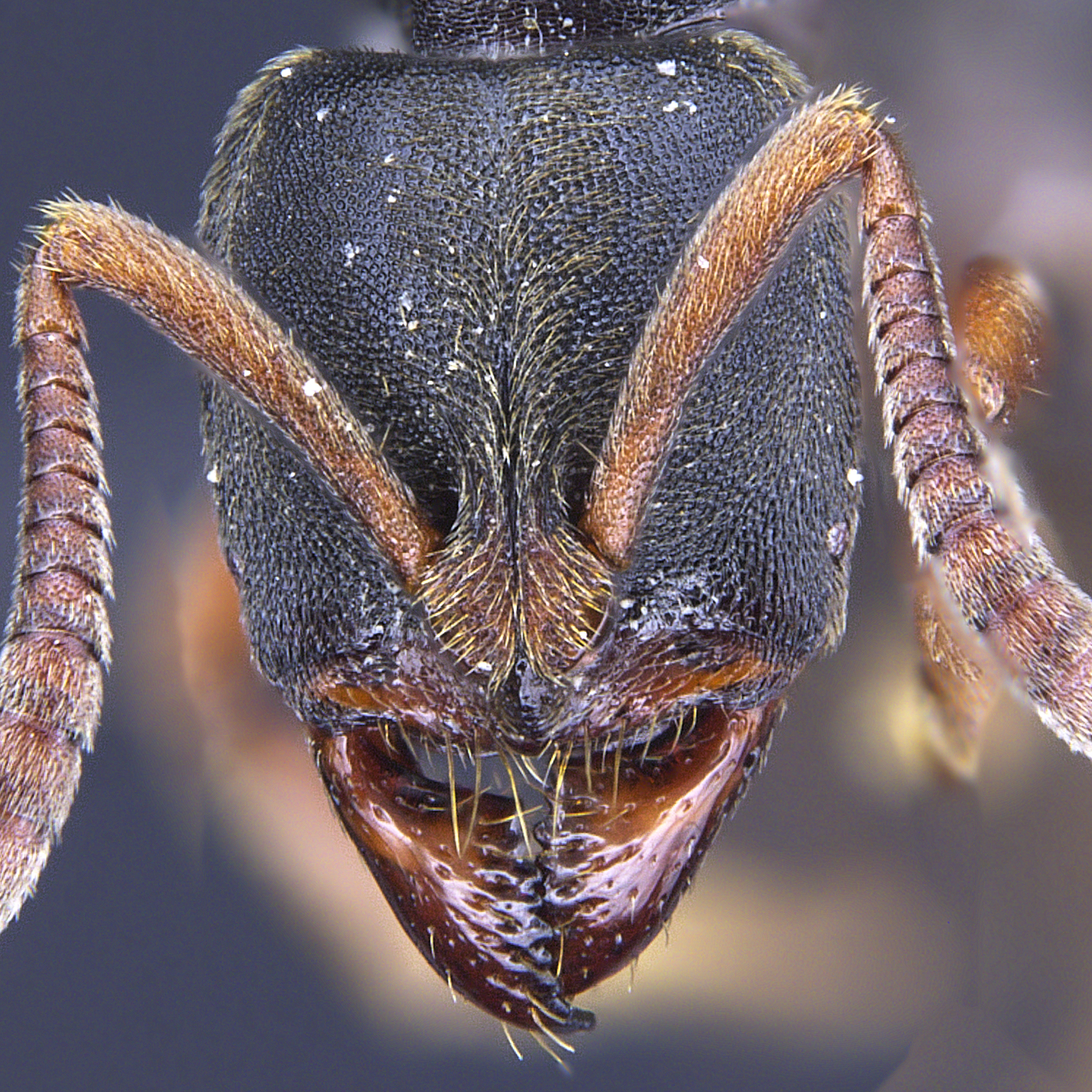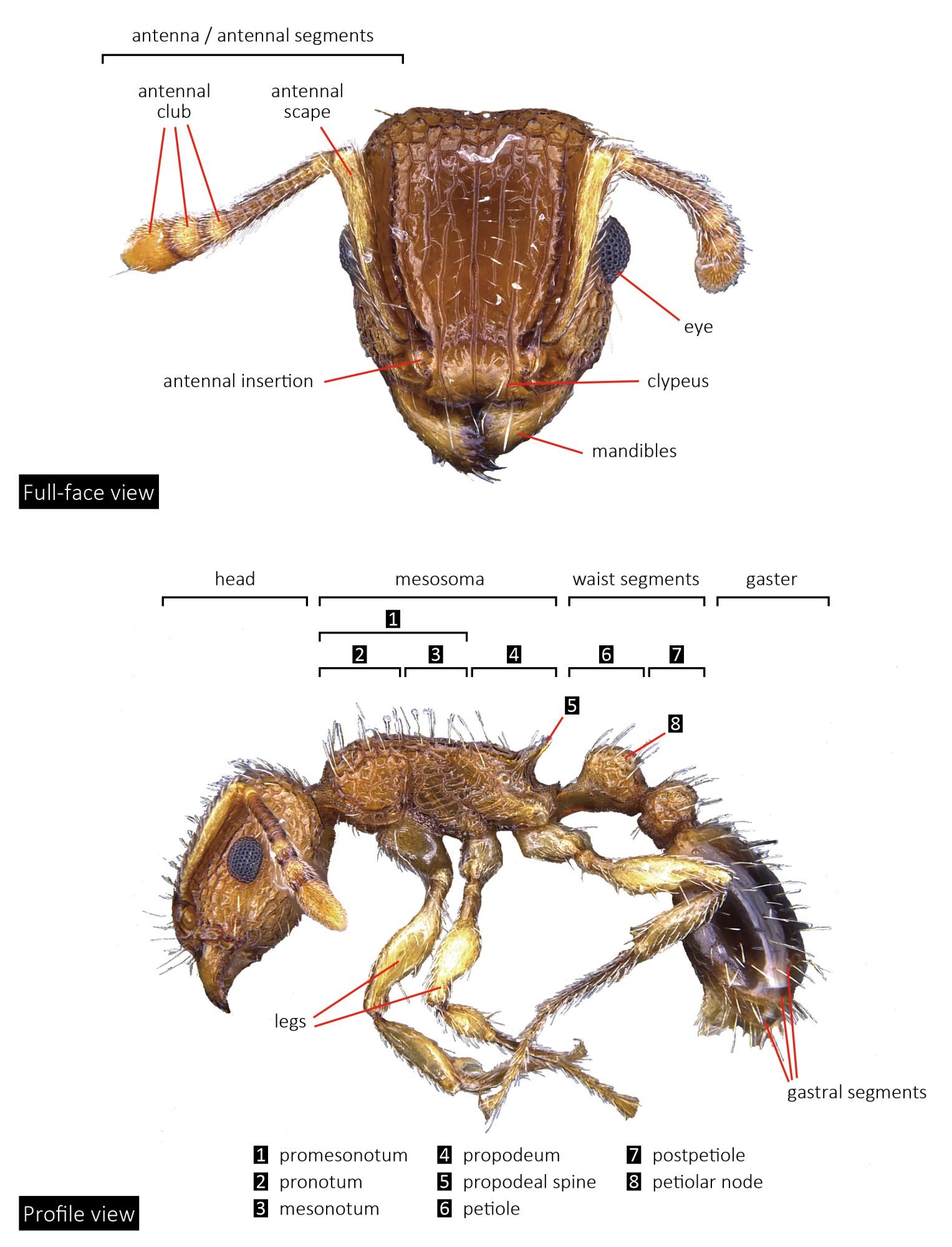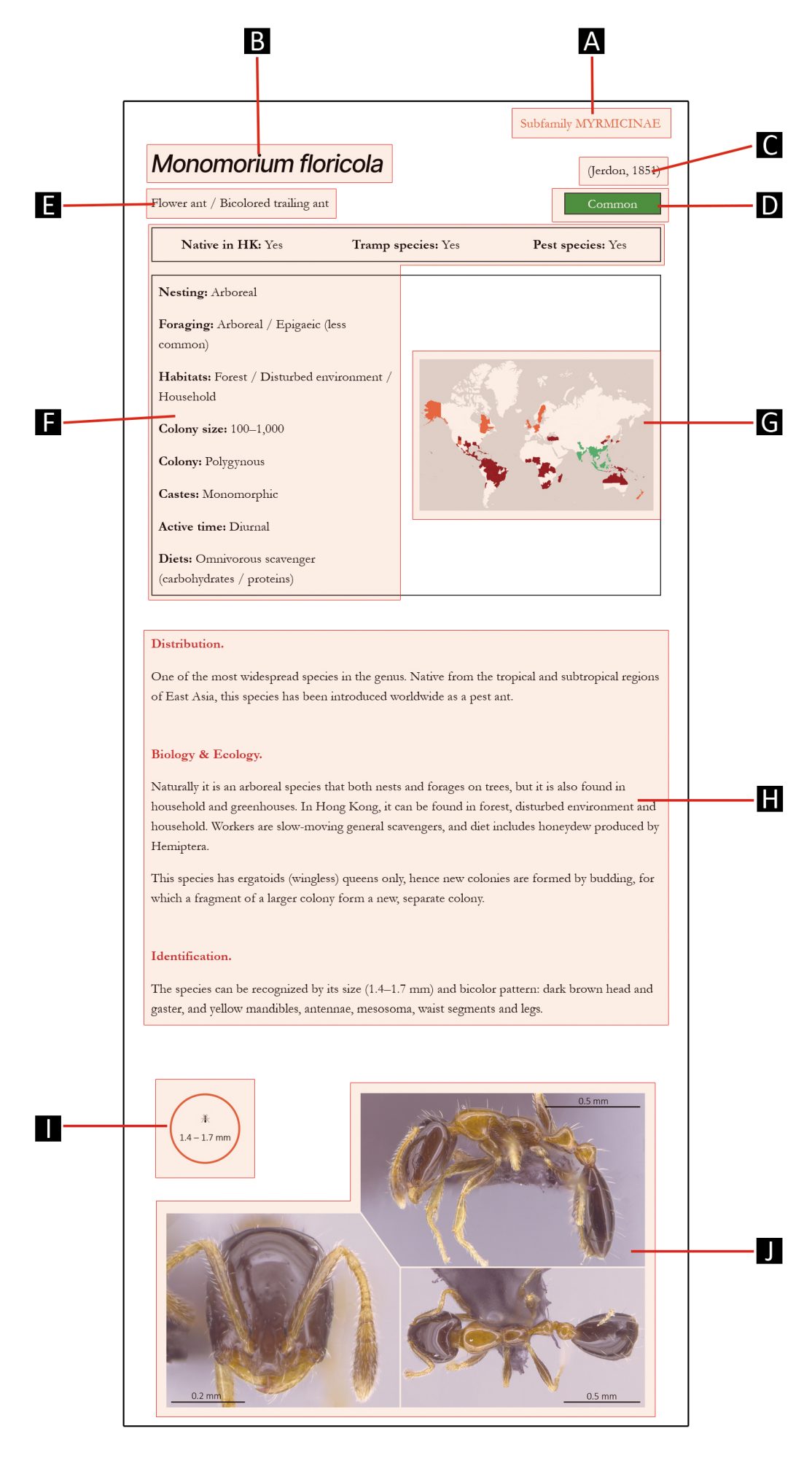
Subfamily PONERINAE
GENUS
Euponera
Forel, 1891
Distribution.
A small ant genus with 25 species described. The genus has a limited distribution in the tropical to temperate regions of the Old World, with the diversity being highest in Madagascar.
Biology & Ecology.
Nests of Euponera species are usually located within the soil, leaf litter or decaying wood. Nests are small, contain several to several dozens of workers. Euponera species are general hunters of other arthropods.
An array of reproductive strategies is used by this genus: some species have alate (winged) queens, while some species likely have ergatoid (wingless) queens instead; at least one species has been reported with mated workers (gamergates).
Identification.
Euponera species are large in size (6–8 mm), mostly with reddish brown to black coloration, but there are species with other colors. They can be recognized by their relatively small eyes and often shiny body surface.

Species in this genus




